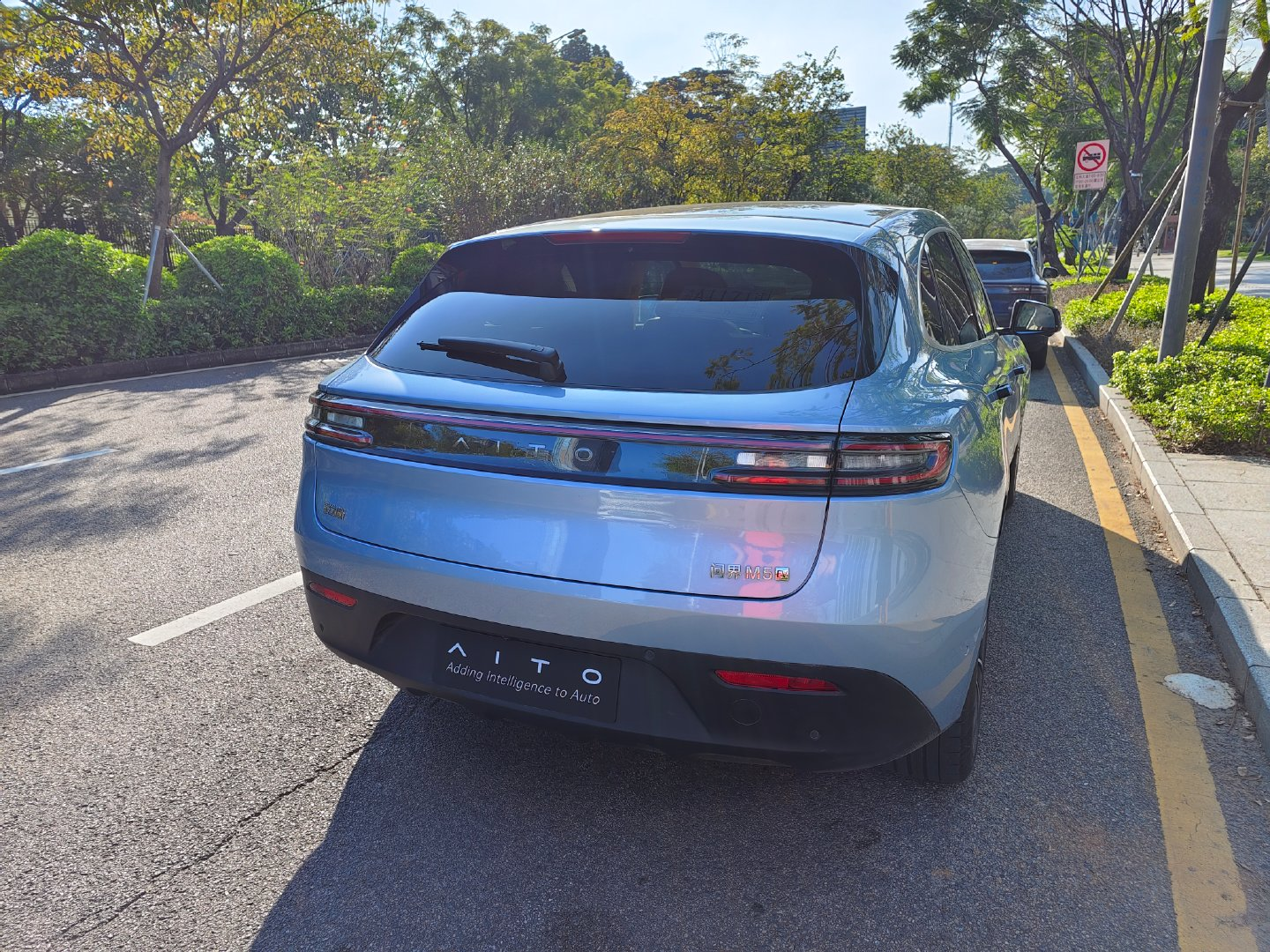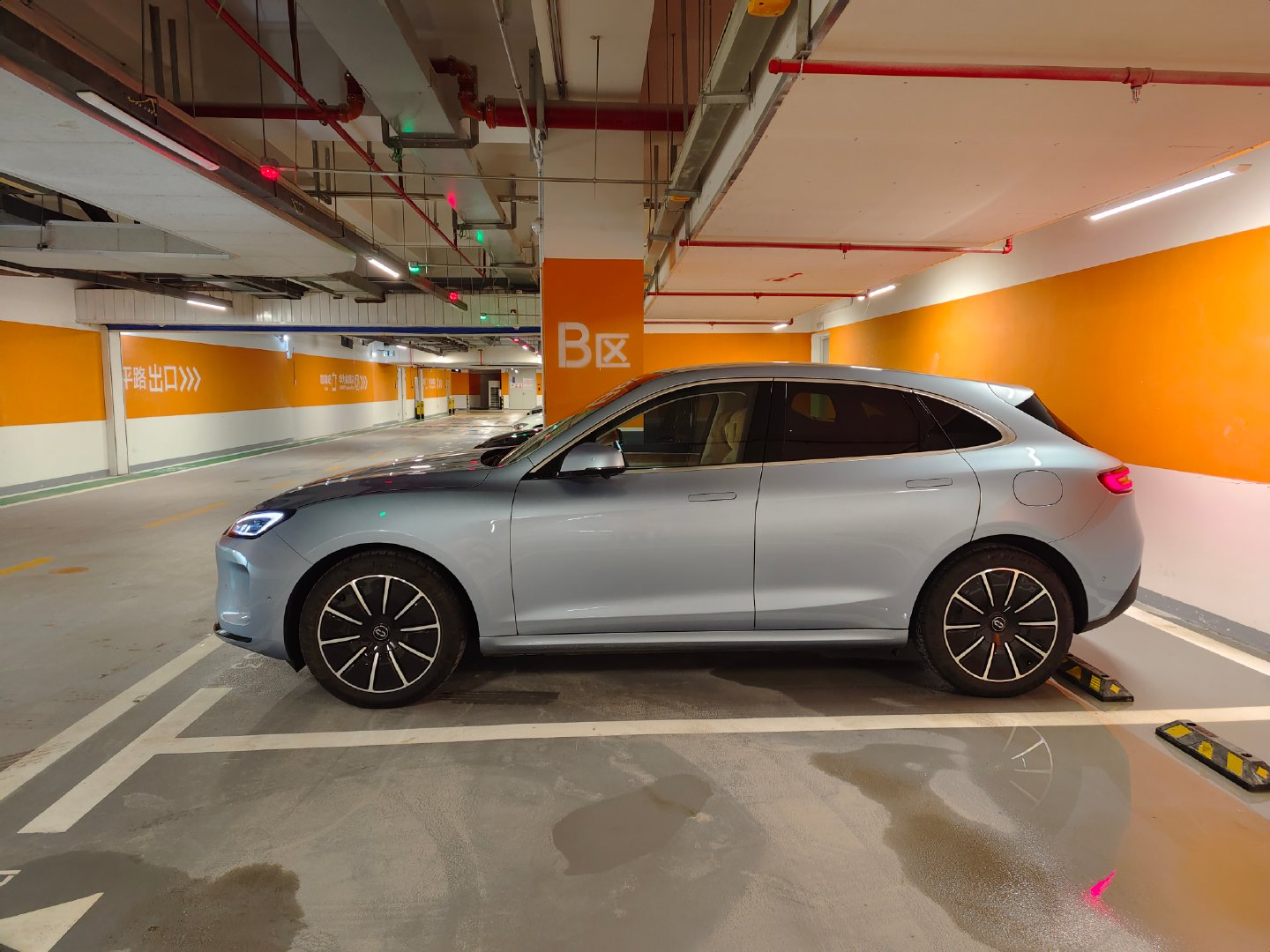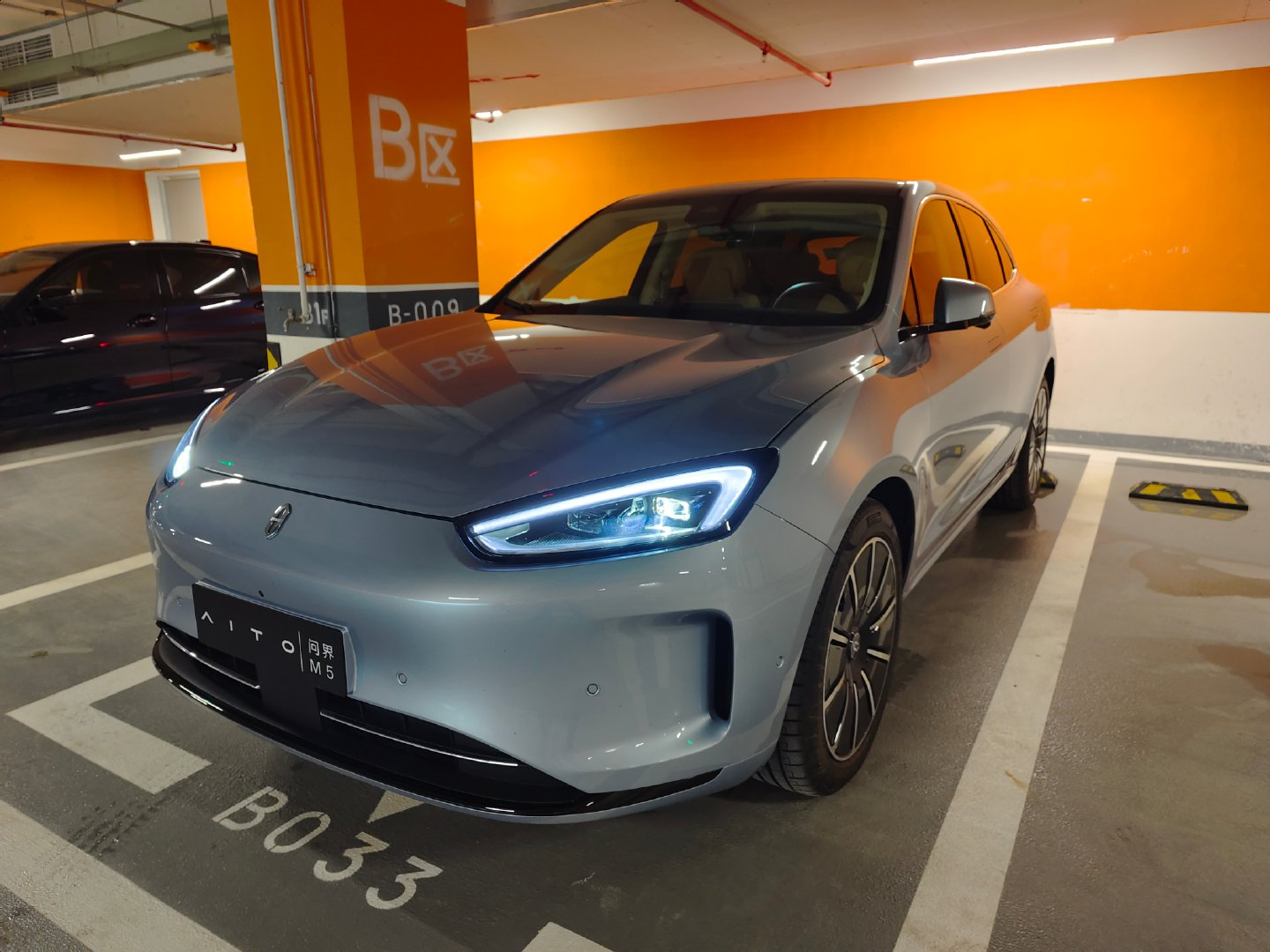Introduction
The Wanjie M5 EV is an all-electric vehicle based on the extended range version, with significant changes to the front end. The vehicle features an 80-degree lithium iron phosphate battery pack, a length of 4785mm, a wheelbase of 2880mm, and seats up to 5 passengers.
A Successful Test Drive
Through the M5, Huawei tested its marketing, channel, production, and rapid product definition capabilities for electric vehicles. Through the M7, it verified its ability to analyze benchmark models and rapidly develop explosive products.
So, the M5 EV is a exploration of the pure electric line: what are the different technological requirements, who is the target audience, and which products are being compared? What are the differences between pure electric and extended range models, from marketing to sales and after-sales?

During the experience, it was clear that the car was limited by development time and could only be tinkered with within the existing platform. This restricted the maximum capabilities and user experience. However, within these limitations, Huawei tried to maximize detailing.
Interior Design That Satisfies the Chinese
Various NAPPA materials are used, and visible to the naked eye are leather and wood grain; glossy plastic is rarely used and, when it is, is wrapped in leather and not distracting.

The overall design style is minimalist, which can be viewed as the premium version of the Tesla Model Y’s style, but the design is not overly complex. Therefore, both young people won’t feel out of date and older people can find the leather and wood grain that they love.
Additionally, there’s a gear shift and I like it…There’s a sense of ritual, although I’ve been driving Tesla and the Ideal for a long time, I feel that the lack of a luxurious gear shift has been missing.
If there is a downside, it is that they should provide a front passenger screen. The co-pilot can’t keep tilting their neck to look at the center console. The usage rate of my L9 front passenger screen is high.
However, it is said that the internal belief is that the front passenger screen is a mistake. It is estimated that the Wanjie models will always have a dual-screen design of “instrument + center console.”
Smooth UI## HUAWEI HarmonyOS Cockpit: A Stunning Display in Car Dashboard
The evaluation of the HUAWEI HarmonyOS cockpit, the car’s central control panel, is by no means an exaggeration.
As I previously wrote in Weibo, the smoothness of HarmonyOS is not only due to the performance provided by the 990A, which makes it very responsive, but also due to the experience from Huawei smartphones, which has given it a large number of animation effects.
There are special effects when entering the menu, exiting, and returning… Yes, this is a de-escalation in terms of user experience.
“Fast anytime, anywhere” and “ubiquitous animation” equals “silky smoothness.”
However, I cannot agree with the design of the main page, which resembles a tablet desktop. Everyone displays the navigation map in the background, which has practical significance-because you need to select a destination as soon as you get in the car.
And although the little E’s voice is powerful, when it comes to calling up the map, you can still feel the half-second delay of the map APP startup, which needs to be optimized.
Voice Assistant on the Next Level
There is no need to say more about it. HUAWEI HarmonyOS’s little E is one of the top-notch in-car voice assistants; almost all in-car settings can be controlled with quick responses and high recognition rates.
And this is also a multi-lingual control. You can say it out loud and see it immediately.
Some people are just reluctant to admit that the new forces have eliminated most of the physical buttons and replaced them with advanced voice assistants. Well, if you don’t like talking, that’s your problem, not the car’s.
ADAS Driving Assistance System that Squeezes Juice from a Stone

Like big brothers, the M5 EV also uses Bosch’s monocular + front millimeter wave solution, which is a relatively poor hardware, there is no doubt about it.
Therefore, the highest level of software is only an LCC lane centering system. It cannot develop turn signal and lane changing functions (requires 360-degree perception hardware).
But as I have previously stated in my Weibo, HUAWEI has developed the potential of this Bosch system to the extreme.
Although its hardware capability is poor, its longitudinal acceleration and deceleration are extremely comfortable. Let me name it: its LCC is more comfortable than Tesla’s AP and NIO ET5, and only the ideal L9 can compete with it in terms of longitudinal comfort to save face for the new forces.
And this system even shows excellent responsiveness to the city’s ring road CUT IN scenarios that surprised me-some car models with laser radar may not process it as well.Meanwhile, Huawei has also developed a 60 fps, rich-in-road-info EID road visualization. It’s mind-blowing. However, the HUD is nearly meaningless as it is static. We are still waiting for the dynamic HUD or the most advanced AR HUD like the one developed by Huawei. Hopefully, it will be available when the M9 comes out.
I haven’t tried other ADAS-assisted cars, but the driving experience of the M5 EV’s ADAS is probably the best, thanks to the Bosch ADAS hardware. That is why its users rarely complain. Unlike some competitors who only draw dragons when using ADAS, Huawei’s ADAS hardware can handle high-speed highways, city routes, and congested intersections well.
BBA or Volkswagen may achieve similar vertical comfort or sensitivity to cut-in scenarios, but they cannot match Huawei’s high frame rate and information-rich visualizations.
Many domestic car models I’ve tested also use Bosch’s ADAS hardware, and most of them create issues such as drawing dragons on straight roads or even swaying left and right, or crossing the line, leaving much to be desired.
Two things are certain:
- Huawei has the ability to force Bosch to optimize this stuff or even enforce their own hardware.
- Huawei knows how to make a user-friendly ADAS.
Everyone knows that Huawei’s Car BU has a complete suite of high-end ADAS hardware, but unfortunately, it didn’t have enough time to use it for the AskCI series.
Speaking of power consumption, I didn’t test it carefully these past two days since I’ve used it mainly for strolling around Shenzhen, but it’s about 17-18 kWh per 100 km.
As for the battery, it’s quite interesting. It uses an 80-degree lithium iron phosphate. Huawei knows well that this vehicle needs a large battery while minimizing costs, so it directly chooses a large-capacity iron phosphate. Unfortunately, joint ventures are really “brain-dead”. Even their low- to mid-end models use ternary lithium batteries, some even use 811. Their product definitions are really impractical.
These people are not willing to spend money on large-power fast-charge modules, neither are they willing to use high-power electric motors for fear of conflicts with their traditional fuel-powered cars. However, they chose the 811 ternary high-nickel batteries, with their advantages never being fully realized. Their cost is wasted, the battery capacity is cut down, while other areas have to make do, and their products’ competitiveness is totally ruined.
Based on my power consumption, the actual range of the M5 EV is estimated to be around 400-420 km. I have checked some other reviews, which match this result.### Exterior Improvements

Huawei is really fast in car modification. They converted M5 to pure electric and improved the front face. They executed the transformation at a fast pace.
The entire industrial design of the M5 series adheres to the main aesthetics of the Chinese people. M7 didn’t change its appearance much to speed up production.
I wonder what the flagship M9 will look like next year.
Comparison with Tesla Model Y
To be frank, M5 EV targets Tesla Model Y. Here are the strengths and weaknesses in my opinion:
Strengths — more spacious, better cabin interior, stronger NVH.
Weaknesses — ADAS lacks behind the Tesla’s, brand value in the automotive field is not as good as Tesla’s, energy consumption is higher and lacks the energy supply system (such as ubiquitous supercharging stations).
Although M5 EV pricing started below 290,000 yuan, Tesla did not follow the norm and lowered its prices when orders fell. All rivals suffered from this blow. I heard that M5 EV has also lost a lot of orders due to Tesla.
Model Y is indeed very strong!
However, if you look at electric cars in the same price range and level, M5 EV still has certain product advantages. Moreover, since Huawei mainly sells hybrid cars, EV models are just complimentary, and their expectations are not high.
Conclusion
After test driving M5 EV, I have a clear understanding of Huawei’s product strengths and weaknesses.
Within the range of this basic hardware, Huawei has done everything it can to create luxurious and high-quality interior designs. Even with poorly-conceived ADAS hardware from Bosch, Huawei was still able to visualize the IED and make the interior comfortable. This is indeed commendable.
Through these cars, Huawei has comprehensively tested its ability to make and sell cars, and has tried both hybrid and pure electric models.
Both M5 and M7 can now sell 12,000 units per month … With an average unit price, they are at least a second-tier luxury car brand.
There is not much to say except that they are stronger than I imagined.
Huawei’s prospects for next yearNext year, the insider information I have is that the M9 will be released – a masterpiece of WJ AUTO.
Not only does it have the advantages of the M5 and M7, but it also fully integrates the capabilities of WJ AUTO’s Car BU, with added features such as LiDAR technology, a high-performance computing platform, and a complete set of advanced ADAS software.
The M9 is expected to be a luxurious full-size SUV, with a minimum length of 5 meters and available in a 6-seater configuration. It will directly enter the large SUV market, with an estimated price of at least 400,000 RMB, which will raise the bar for WJ AUTO’s single-car price.
There are also rumors of a sedan, but no other information is available.
Additionally, there may be a test model of LiDAR technology added to the current ADAS models for the annual upgrade.
In any case, WJ AUTO’s product line will expand greatly next year, with an expected annual sales volume of 300,000 units, and possibly even reaching 500,000 units.
With already 1000 stores open, WJ AUTO’s expansion is impressive- even Huawei couldn’t do it at this pace.
This article is a translation by ChatGPT of a Chinese report from 42HOW. If you have any questions about it, please email bd@42how.com.
